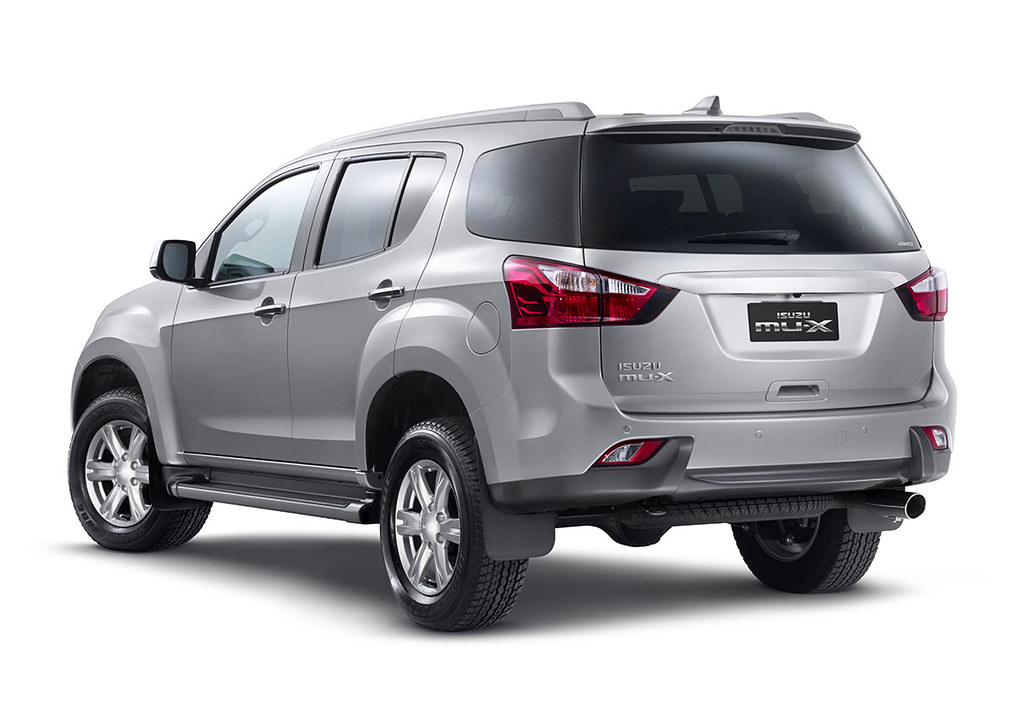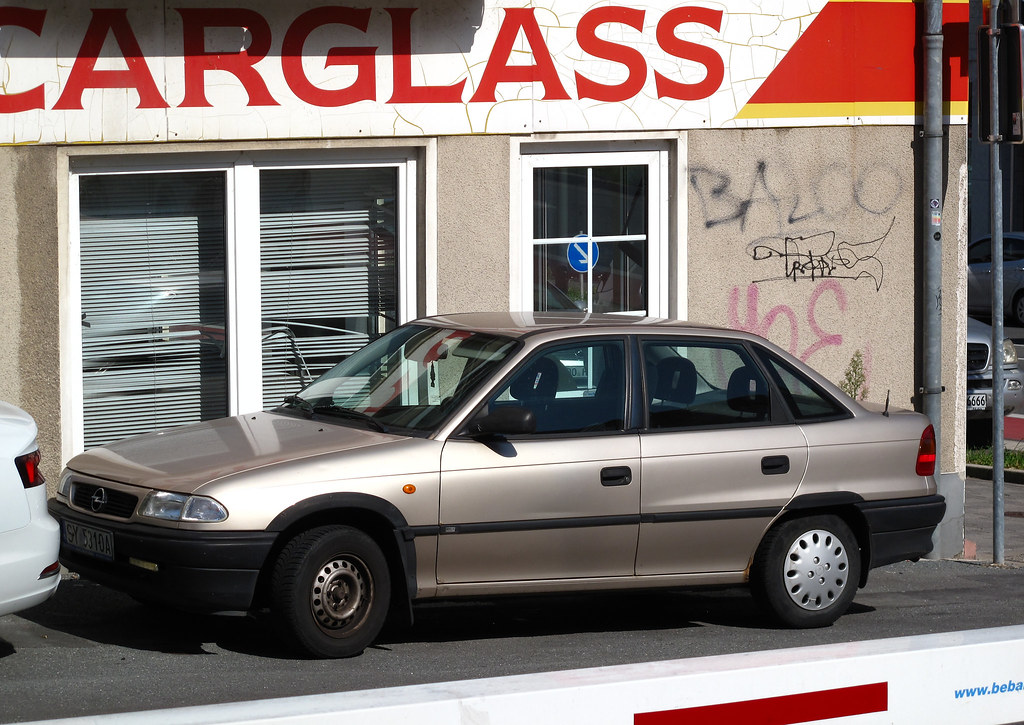
In the vibrant and ever-evolving landscape of automotive enthusiasm, a generational divide is subtly, yet definitively, reshaping the classic car market. For decades, the chrome-laden, V8-powered behemoths beloved by the Baby Boomer generation ruled the roost, cherished as symbols of American ingenuity and post-war prosperity. However, as the reins of car collecting pass to younger generations like Millennials and Gen Z, a clear preference for driving experience over pristine preservation, and a lean towards practicality, affordability, and a different kind of nostalgia, has emerged.
Indeed, there’s an enduring adage in Detroit that rings truer than ever: “You can sell an old man a young man’s car but you can never sell a young man an old man’s car.” This sentiment perfectly encapsulates the shift we’re witnessing. While younger enthusiasts are undeniably passionate about car culture—with 60% of Gen Z respondents in a Hagerty survey expressing a desire to own a classic car, compared to just 31% of boomers—their definition of a desirable classic often diverges sharply from that of their parents and grandparents. They seek out models that offer a different kind of connection, a different kind of drive.
The classic cars we are about to explore, while once representing the pinnacle of automotive desire for their original owners, now find themselves on the periphery of younger buyers’ interests. Despite their historical significance, powerful engines, and often striking designs, these vehicles are being consistently overlooked. The reasons are varied but often converge on issues of size, fuel efficiency, maintenance complexity, and a simple perception that they are, quite simply, ‘old man’s cars.’ We delve into seven such venerable rides, dissecting why they just don’t click with the modern enthusiast.
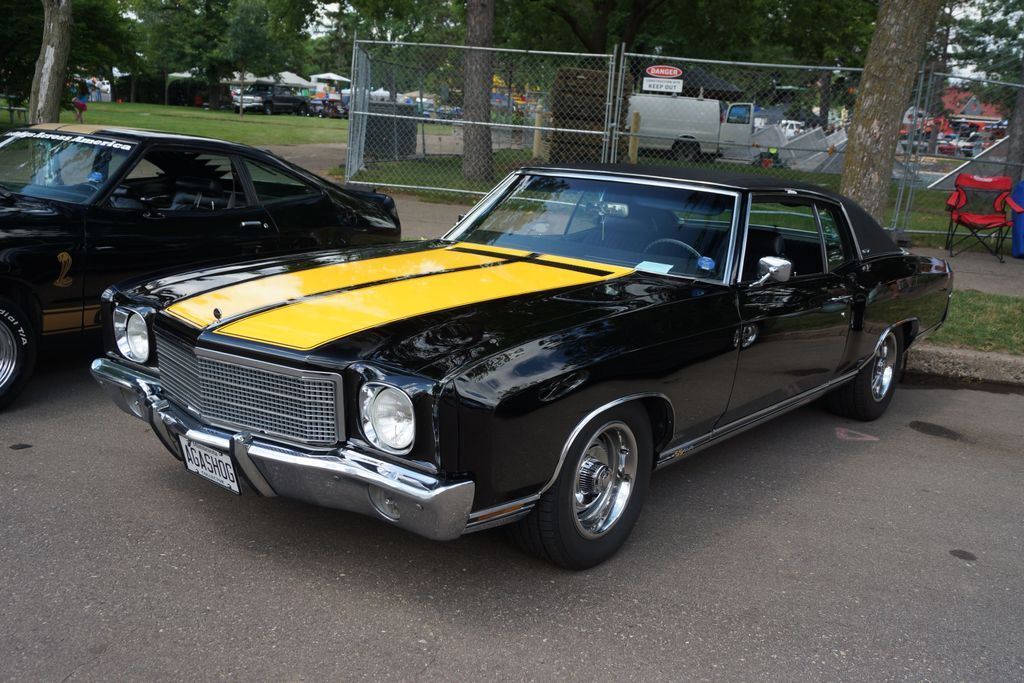
1. **Chevrolet Monte Carlo**The Chevrolet Monte Carlo, a nameplate that graced American roads from 1970 to 2007, once epitomized the personal luxury car, occasionally flexing its muscles as a bona fide performance machine, particularly throughout the 1970s and 1980s. Its silhouette, characterized by a long, sweeping hood and a distinctive, often opulent design, spoke volumes about style and comfort. Underneath that impressive sheet metal, a range of powerful V8 engines delivered performance that was both exhilarating and distinctly American, offering a driving experience tailored for cruising with authority.
For many Millennials, however, the allure of the Monte Carlo remains elusive. The primary deterrents often revolve around its sheer physical presence; its large size, while a hallmark of luxury in its day, is often perceived as cumbersome and impractical for modern urban and suburban driving. This generous footprint naturally correlates with significant fuel inefficiency, a major concern for a generation increasingly conscious of both environmental impact and running costs. Furthermore, there’s a pervasive perception that the Monte Carlo is unequivocally an “old man’s car,” an image that struggles to resonate with younger aesthetics and values.
Despite these contemporary drawbacks, the Monte Carlo carries an undeniable retro charm that, in theory, could appeal to a niche segment of younger buyers. Its classic lines and spacious interior offer a unique aesthetic, and those powerful engine options promise an engaging, if thirsty, ride. Yet, the gravitational pull toward more modern, fuel-efficient vehicles, packed with contemporary technology and amenities, proves too strong for most, pushing this once-popular classic further down the list of desired acquisitions for a new generation.
Car Model Information: 2024 Toyota Camry SE
Name: Chevrolet Monte Carlo
Manufacturer: Chevrolet
Production: 1969–1987,1994–2007
ModelYears: 1970–1988,1995–2007
Class: Personal luxury car
BodyStyle: coupé
Layout: FR layout
Caption: 2006 Chevrolet Monte Carlo LS
Categories: 1980s cars, 1990s cars, 2000s cars, All Wikipedia articles written in American English, All articles needing additional references
Summary: The Chevrolet Monte Carlo is a two-door coupe that was manufactured and marketed by the Chevrolet division of General Motors. Deriving its name from the city in Monaco, the Monte Carlo was marketed as the first personal luxury car of the Chevrolet brand. Introduced for the 1970 model year, the model line was produced across six generations through the 2007 model year, with a hiatus from 1989 until 1994. The Monte Carlo was a variant of the Pontiac Grand Prix throughout its production.
From 1970 until 1972, the Monte Carlo rode on the unique “A-Special” platform with the Grand Prix, shifting to the standard A-body intermediate chassis from the 1973 through 1977 model years. For 1978, the Monte Carlo line underwent downsizing, but was still considered a midsized coupe. The rear-wheel drive A-body platform of this generation of Monte Carlo was redesignated as the G-body when GM’s front-wheel drive A-body cars were introduced for the 1982 model year. After an abbreviated 1988 model year, the Monte Carlo was replaced by the two-door Chevrolet Lumina.
For the 1995 model year, the Monte Carlo was revived, replacing the two-door Lumina. It shared the front-wheel drive W-platform with the two-door Grand Prix, and was the largest coupe in the Chevrolet lineup. After the 2002 model year, the Grand Prix coupe was discontinued, the Monte Carlo became the largest two-door model produced by an American auto manufacturer.
In response to declining sales of the model line, Chevrolet discontinued the Monte Carlo after the 2007 model year. During much of its production, the Monte Carlo represented the Chevrolet brand in stock car racing. During the 1980s, the Monte Carlo SS was introduced, featuring aerodynamically enhanced styling; as part of its revival, the Monte Carlo again represented Chevrolet in stock car racing from 1995 through its discontinuation.
Get more information about: Chevrolet Monte Carlo
Buying a high-performing used car >>>
Brand: Chevrolet Model: Monte Carlo
Price: $23,188 Mileage: 64,336 mi.
Read more about: Beyond the Hype: 12 Underestimated Coupes That Quietly Redefined Value and Performance
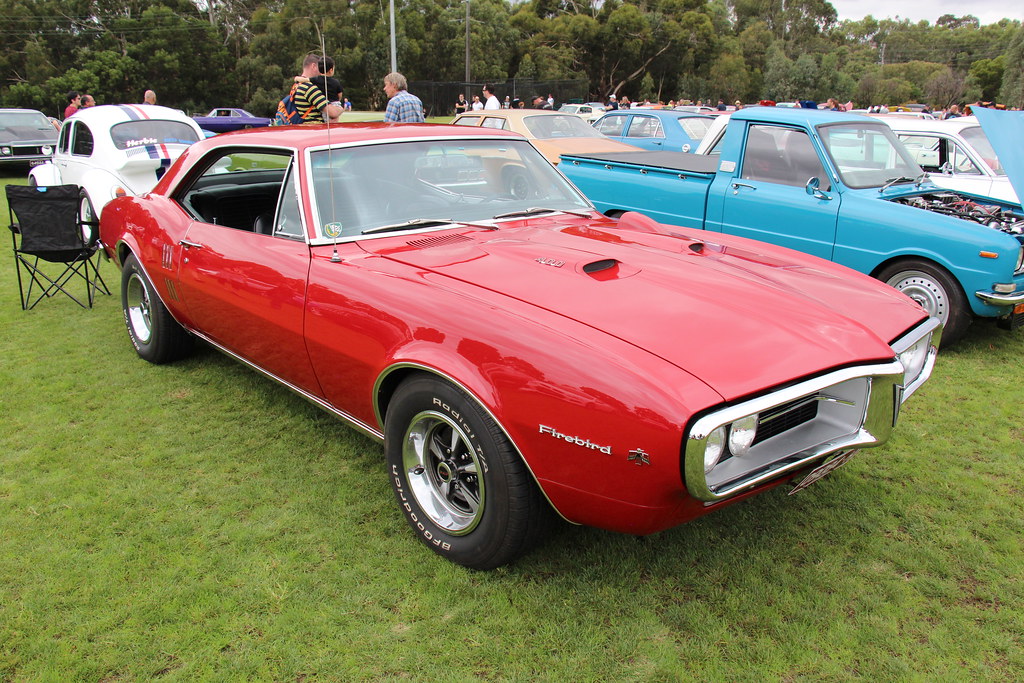
2. **Pontiac Firebird**The Pontiac Firebird, produced from 1967 to 2002, stands as an unquestioned muscle car icon, particularly the legendary Trans Am variant, which achieved cinematic immortality through its prominent role in the “Smokey and the Bandit” movies. This machine was designed to thrill, boasting engine options that spanned from robust inline-sixes to formidable V8 powerhouses, ensuring an exciting performance pedigree. Its striking design elements, including the infamous “screaming chicken” hood decal, cemented its status as a bold and unmistakable presence on the road.
However, for Millennials, the very elements that once made the Firebird a sensation now often contribute to its neglect. Its dated technology, a common characteristic of vehicles from that era, falls short of the expectations of a generation accustomed to advanced infotainment and safety features. Compounded by higher maintenance costs, a reality for many vintage performance cars, the Firebird struggles to compete with the practical considerations of newer sports cars that offer superior fuel efficiency and a full suite of modern amenities without the associated upkeep headaches.
While the raw, exciting performance and the undeniably striking design elements of the Firebird hold a certain timeless appeal, particularly for those with an appreciation for muscle car heritage, the practical hurdles are significant. Younger buyers are increasingly prioritizing a blend of exhilarating driving dynamics with contemporary convenience and economic viability. This preference means that, despite its iconic status and powerful heart, the Firebird frequently finds itself overlooked in favor of vehicles that better align with modern sensibilities and daily usability.
Car Model Information: 1967 Pontiac Firebird LS3
Name: Pontiac Firebird
Caption: The second, third, and fourth generations of,the Pontiac Firebird Trans Am
Manufacturer: Pontiac (automobile)
Production: February 23, 1967 – August 30, 2002
ModelYears: 1967 – 2002
Class: Pony car,Muscle car
Platform: GM F platform
Related: Chevrolet Camaro
Layout: Front engine, rear-wheel-drive layout
Categories: 1970s cars, 1980s cars, 1990s cars, 2000s cars, All articles with dead external links
Summary: The Pontiac Firebird is an American automobile built and produced by Pontiac from the 1967 to 2002 model years. Designed as a pony car to compete with the Ford Mustang, it was introduced on February 23, 1967, five months after GM’s Chevrolet division’s platform-sharing Camaro. This also coincided with the release of the 1967 Mercury Cougar, Ford’s upscale, platform-sharing version of the Mustang.
The name “Firebird” was also previously used by GM for the General Motors Firebird series of concept cars in the 1950s.
Get more information about: Pontiac Firebird
Buying a high-performing used car >>>
Brand: Pontiac Model: Firebird
Price: $109,999 Mileage: 20 mi.
Read more about: Dream Drives: 15 Classic Cars That Should Absolutely Be Revived for Today’s Roads
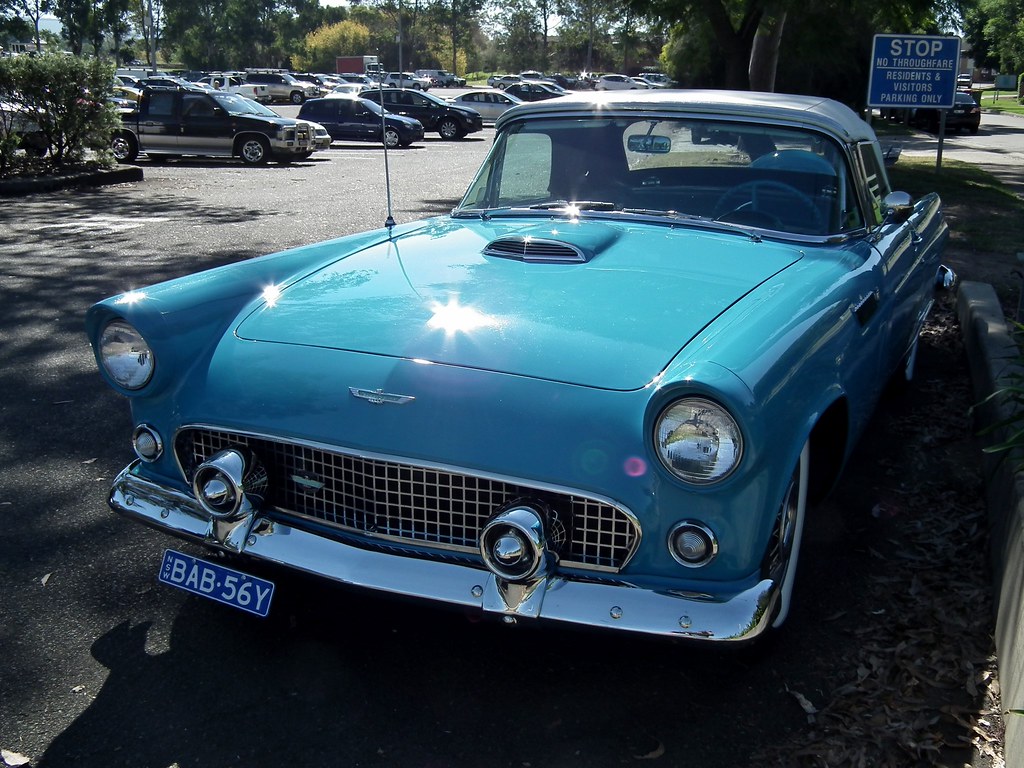
3. **Ford Thunderbird**The Ford Thunderbird, a remarkably long-lived nameplate spanning from 1955 to 2005, underwent a fascinating evolution throughout its production run, transforming from an elegant two-seat sports car into a more substantial luxury cruiser. It’s the earlier models, specifically those from the 1950s and 1960s, that remain particularly cherished by the Baby Boomer generation, celebrated for their potent V8 engines and sleek, stylish designs that captured the optimistic spirit of mid-century America. These Thunderbirds were more than just cars; they were statements of sophistication and freedom.
Today, however, Millennials tend to pass over the Thunderbird, often perceiving it as quintessentially a car for older generations. This generational pigeonholing, combined with a pronounced lack of modern technology and the undeniable reality of its less-than-stellar fuel efficiency, diminishes its appeal considerably. The convenience and connectivity that younger buyers expect from their vehicles are simply not present in these classic cruisers, making them feel out of sync with contemporary needs and preferences.
Despite the undeniable classic beauty of its design and the robust power offered by its V8 engines, the practical considerations often overshadow the aesthetic and historical charm. The absence of features like modern navigation, advanced safety systems, or even simply better gas mileage makes the Thunderbird a less compelling option for younger buyers who are weighing emotional appeal against the tangible benefits of modern automotive engineering. Thus, a car once synonymous with American automotive dreams now often sits on the sidelines of the modern collector’s radar.
Car Model Information: 1956 Ford Thunderbird Base
Name: Ford Thunderbird
Caption: 1957 Thunderbird
Manufacturer: Ford Motor Company
Production: unbulleted list
ModelYears: unbulleted list
Class: unbulleted list
Layout: Front-engine, rear-wheel drive layout
Categories: 1960s cars, 1970s cars, 1980s cars, 1990s cars, 2000s cars
Summary: The Ford Thunderbird is a personal luxury car manufactured and marketed by Ford Motor Company for model years 1955 to 2005, with a hiatus from 1998 to 2001.
Ultimately gaining a broadly used colloquial nickname, the T-Bird, the model was introduced as a two-seat convertible, subsequently offered variously in a host of body styles including as a four-seat hardtop coupe, four-seat convertible, five-seat convertible and hardtop, four-door pillared hardtop sedan, six-passenger hardtop coupe, and five-passenger pillared coupe, before returning in its final generation, again as a two-seat convertible.
At its inception, Ford targeted the two-seat Thunderbird as an upscale model. The 1958 model year design introduced a rear seat and arguably marked the expansion of a market segment that came to be known as personal luxury cars, positioned to emphasize comfort and convenience over handling and high-speed performance.
Get more information about: Ford Thunderbird
Buying a high-performing used car >>>
Brand: Ford Model: Thunderbird
Price: $34,999 Mileage: 87,117 mi.
Read more about: Dream Drives: 15 Classic Cars That Should Absolutely Be Revived for Today’s Roads
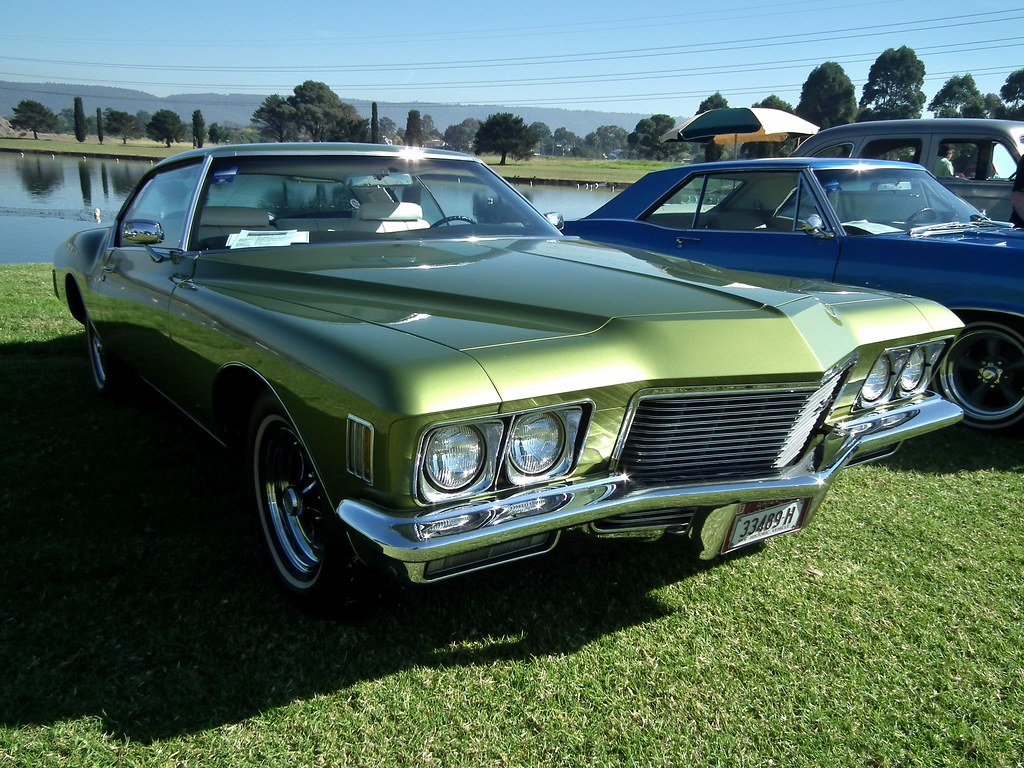
4. **Buick Riviera**The Buick Riviera, produced from 1963 to 1999, stands as a testament to American automotive luxury and distinctive styling. It is particularly renowned for its avant-garde “boat-tail” models of the early 1970s, which boasted a design so unique it remains instantly recognizable and often polarizing. With a focus squarely on comfort and an arsenal of powerful V8 engines under its hood, the Riviera was far more than just transportation; it was a definitive status symbol of its era, embodying a blend of understated elegance and formidable presence.
Yet, for many Millennials, the Riviera presents a conundrum of impracticality. Its substantial size, a characteristic shared with many luxury cars of its time, is often viewed as unwieldy for today’s congested roads and tight parking spaces. This large footprint, naturally, contributes to significant fuel inefficiency, a financial and environmental consideration that carries considerable weight for younger consumers. Furthermore, the specter of high maintenance costs, inherent in preserving a classic luxury vehicle, acts as a considerable deterrent.
While the Riviera’s classic design and opulent luxury features could undeniably appeal to a segment of enthusiasts drawn to vintage aesthetics and a bygone era of automotive grandeur, these practical issues frequently outweigh the nostalgic allure. The desire for a vehicle that marries style with sensible running costs and contemporary ease of ownership means that, despite its distinctive beauty and comfortable ride, the Buick Riviera often remains a charming relic that younger buyers admire from a distance rather than bring into their garages.
Car Model Information: 1971 Buick Riviera
Caption: 1963 Buick Riviera
Name: Buick Riviera
Predecessor: Buick Super
Manufacturer: Buick
ModelYears: 1963–1993,1995–1999
Class: Personal luxury car
Categories: 1960s cars, 1970s cars, 1980s cars, 1990s cars, All articles with specifically marked weasel-worded phrases
Summary: The Buick Riviera is a personal luxury car that was marketed by Buick from 1963 to 1999, with the exception of the 1994 model year.
As General Motors’ first entry into the personal luxury car market segment, the Riviera was highly praised by automotive journalists upon its high-profile debut. It was a ground-up design on a new GM E platform debuting for the 1963 model year and was also Buick’s first unique Riviera model.
Unlike its subsequent GM E platform stablemates, the Oldsmobile Toronado and Cadillac Eldorado, the Riviera was initially a front engine/rear-wheel drive platform, switching to front-wheel drive starting with the 1979 model year.
While the early models stayed close to their original form, eight subsequent generations varied substantially in size and styling. A total of 1,127,261 Rivieras were produced.
The Riviera name was resurrected for two concept cars that were displayed at auto shows in 2007 and in 2013.
Get more information about: Buick Riviera
Buying a high-performing used car >>>
Brand: Buick Model: Riviera
Price: $22,499 Mileage: 91,150 mi.
Read more about: Seriously Where Did They Go? 9 Classic Sedans That Vanished From Our Streets.
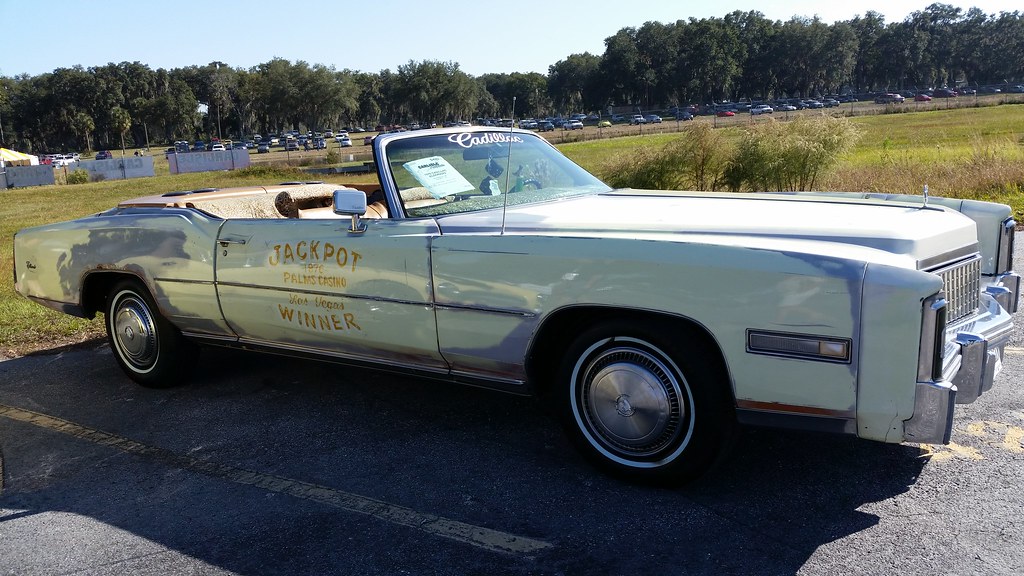
5. **Cadillac Eldorado**The Cadillac Eldorado, a magnificent symbol of American luxury and opulent excess, enjoyed a long and illustrious production run from 1952 to 2002. Throughout its decades, the Eldorado was synonymous with automotive grandeur, captivating affluent buyers with its sheer scale, often massive V8 engines, and sumptuously plush interiors that left no doubt as to its prestigious standing. It was a vehicle designed to convey success and provide an unparalleled level of comfort and presence on the road.
However, a new generation of buyers, particularly Millennials, frequently overlooks the Eldorado, primarily due to its colossal size, which can be daunting in an age of smaller, more nimble vehicles. This impressive scale comes hand-in-hand with notoriously poor fuel economy, a significant practical and financial hurdle for modern drivers. Moreover, the reality of high maintenance costs associated with such a complex and aged luxury machine further diminishes its appeal, making it a less attractive proposition compared to more contemporary options.
While the Eldorado’s classic design, the sheer indulgence of its luxurious interiors, and the potent power of its engines could indeed hold a certain appeal for those with a deep appreciation for American automotive history and an extravagant aesthetic, the practical drawbacks tend to cast a long shadow. The blend of enormous dimensions, considerable running costs, and the general complexities of owning a vintage luxury car make the Cadillac Eldorado a challenging proposition for younger generations seeking a more balanced and practical classic car ownership experience.
Car Model Information: 1976 Cadillac Eldorado Convertible
Caption: 1963 Cadillac Eldorado Convertible
Name: Cadillac Eldorado
Manufacturer: Cadillac
Production: 1952–2002
Layout: Front-engine, rear-wheel-drive layout
Aka: Cadillac Fleetwood Eldorado
Class: Personal luxury car
Successor: Cadillac CTS
Categories: 1960s cars, 1970s cars, 1980s cars, 1990s cars, 2000s cars
Summary: The Cadillac Eldorado is a luxury car manufactured and marketed by the Cadillac Motor Car Division of General Motors from 1952 until 2002, over twelve generations.
The Eldorado was at or near the top of the Cadillac product line. The original 1953 Eldorado convertible and the Eldorado Brougham models of 1957–1960 had distinct bodyshells and were the most expensive models offered by Cadillac during those years. The Eldorado was never less than second in price after the Cadillac Series 75 limousine until 1966. Beginning in 1967, the Eldorado retained its premium position in the Cadillac price structure, but was manufactured in high volumes on a unique, two-door personal luxury car platform.
The Eldorado carried the Fleetwood designation from 1965 through 1972, and was seen as a modern revival of the pre-war Cadillac V-12 and Cadillac V-16 roadsters and convertibles.
Get more information about: Cadillac Eldorado
Buying a high-performing used car >>>
Brand: Cadillac Model: Eldorado
Price: $28,499 Mileage: 31,898 mi.
Read more about: Dream Drives: 15 Classic Cars That Should Absolutely Be Revived for Today’s Roads
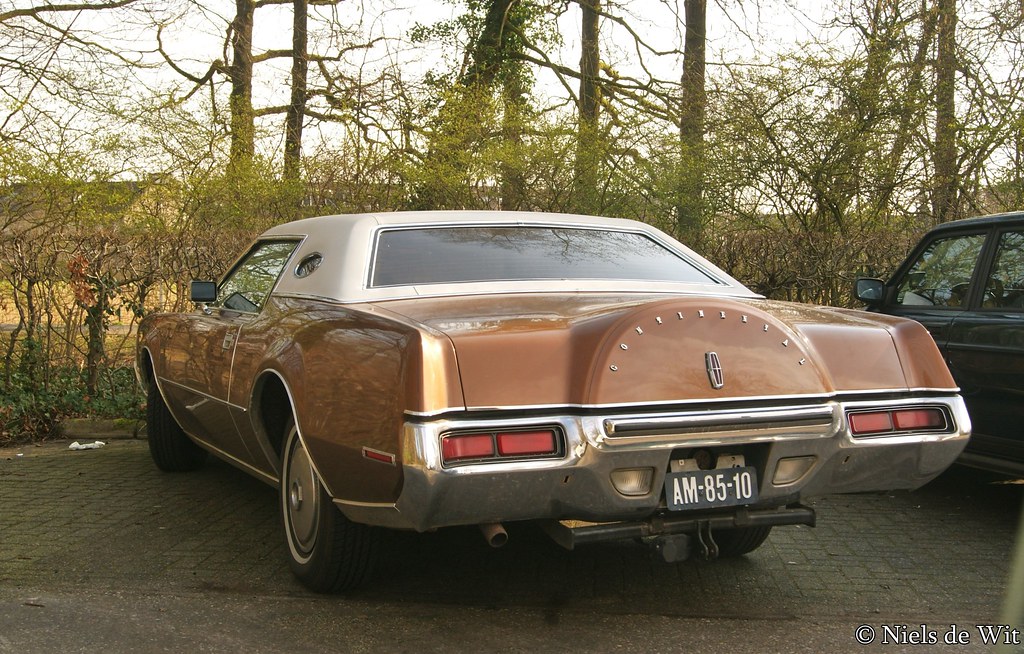
6. **Lincoln Continental Mark IV**The Lincoln Continental Mark IV, produced between 1972 and 1976, is an undisputed automotive landmark, celebrated for its truly distinctive design elements. Its iconic opera windows, a signature flourish, and its strikingly long, sleek body conspired to create a visual presence that was both elegant and undeniably commanding. Powered by a formidable 460 cubic inch V8 engine, the Mark IV wasn’t just about looks; it promised and delivered a ride that was characterized by both smoothness and powerful, effortless cruising, perfectly encapsulating luxury in motion.
For many Millennials, however, the Mark IV remains largely in the realm of an older generation’s car, facing significant practical barriers to adoption. Its immense size, a hallmark of its luxury status, proves to be a major turn-off, as does its predictably poor fuel economy, a considerable concern in today’s economic and environmental climate. These factors, combined with the perception of it belonging to a bygone era, often deter younger buyers from considering it as a viable classic.
Despite the undeniable allure of its meticulously crafted, luxurious interior and its uniquely styled exterior, the practical drawbacks of ownership—specifically its cumbersome dimensions, thirst for fuel, and the often-associated higher maintenance costs of a vintage luxury vehicle—often outweigh the aesthetic and historical appeal. For a generation that values a blend of style, performance, and modern practicality, the Lincoln Continental Mark IV, for all its grandeur, struggles to find its place in the contemporary enthusiast’s garage.
Car Model Information: 2024 Toyota Camry SE
Manufacturer: Lincoln Motor Company
Caption: 1975 Continental Mark IV
Name: Mark IV
Production: 1971–1976
ModelYears: 1972–1976
BodyStyle: coupe
Layout: Front-engine, rear-wheel-drive layout
Engine: 460 cuin
Abbr: on
Assembly: Wixom Assembly,Wixom, Michigan
Transmission: Ford C6 transmission
Predecessor: Lincoln Continental Mark III
Wheelbase: 120.4 in
Length: 228.1 in
Width: 79.8 in
Height: 53.5 in
Weight: convert
Successor: Lincoln Continental Mark V
Related: Ford Thunderbird (sixth generation)
Categories: 1970s cars, All Wikipedia articles needing clarification, Articles with short description, Cars discontinued in 1976, Cars introduced in 1972
Summary: The Continental Mark IV is a personal luxury car that was marketed by the Lincoln division of Ford Motor Company from the 1972 to 1976 model years. The third generation of the Mark series, the Mark IV grew in size over its Continental Mark III predecessor. As with the previous generation, the Mark IV saw little direct competition in the American marketplace, competing nearly exclusively against the Cadillac Eldorado (redesigned for 1971).
As with the Mark III, the Mark IV shared its chassis with the Ford Thunderbird, with the Mark IV receiving its own bodywork below the windows. Hidden headlights and a faux Rolls-Royce chrome grille were retained, and a Continental spare tire trunklid. For 1976, the Designer Series option package was introduced; in what would become a tradition for the Mark series (and later Lincoln), the option consisted of specially coordinated exterior and interior trims developed between Lincoln and contemporary fashion designers.
Ford assembled the Continental Mark IV at its Wixom Assembly Plant in Michigan) facility alongside the Ford Thunderbird and the Lincoln Continental. For 1977, the Mark IV underwent a substantial revision, becoming the Continental Mark V.
Get more information about: Lincoln Continental Mark IV
Buying a high-performing used car >>>
Brand: Lincoln Model: Continental Mark IV
Price: $23,188 Mileage: 64,336 mi.
Read more about: Inside Vanilla Ice’s Garage: A Deep Dive into the Rapper’s Eclectic and Multi-Million Dollar Automotive Collection
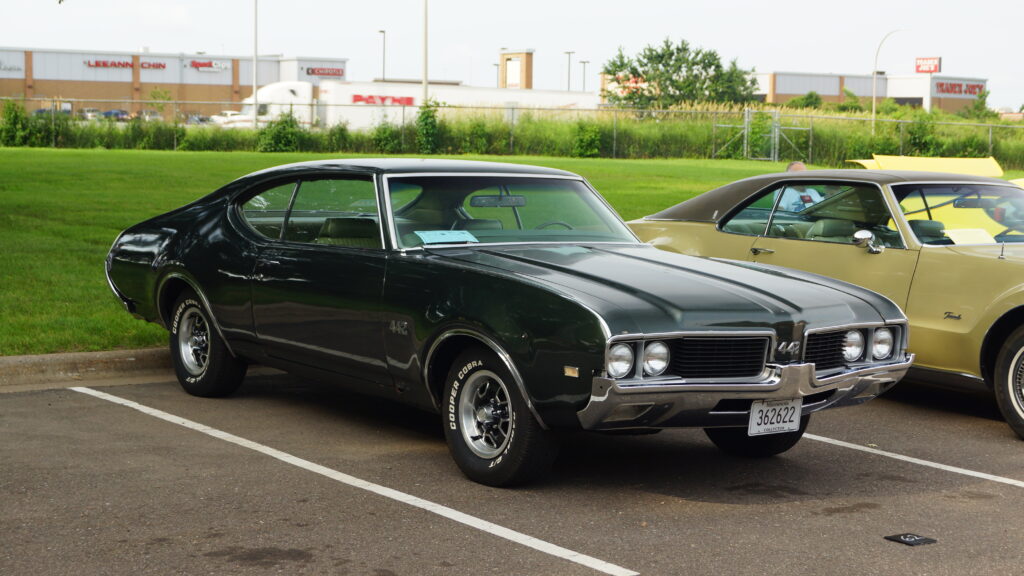
7. **Oldsmobile 442**The Oldsmobile 442, manufactured from 1964 to 1987, is revered as a quintessential classic muscle car, instantly recognizable for its powerful V8 engines and an aggressively styled aesthetic that screamed performance. The ‘442’ designation itself was a badge of honor, signifying a four-barrel carburetor, a four-speed manual transmission, and dual exhausts – a pure recipe for exhilaration on the open road. It was a car built for speed, sound, and a driving experience that was visceral and unforgettable.
In the eyes of many Millennials, however, the 442, despite its legendary status, faces significant challenges in gaining traction. Its well-documented fuel inefficiency, a common characteristic among muscle cars of its era, is a major deterrent for a generation accustomed to, and expecting, better mileage. The prospect of higher maintenance costs, coupled with a preference for modern performance cars that deliver comparable thrills with contemporary technology and efficiency, often leads younger buyers to overlook this classic powerhouse.
While the Oldsmobile 442 undoubtedly possesses a compelling classic muscle car appeal, driven by its robust engines and iconic design, these inherent practical drawbacks significantly limit its broader attraction. Enthusiasts who appreciate raw power and a tangible connection to automotive history might still be drawn to its charms, but for the wider demographic of younger car buyers who weigh passion against practicality and modern convenience, the 442 often remains an admired relic rather than a coveted acquisition.
Car Model Information: 1969 Oldsmobile 442
Name: Oldsmobile 442
Manufacturer: Oldsmobile
ModelYears: 1964–1980,1985–1987,1990–1991
Class: Muscle car
Layout: FR layout
Caption: 1971 Oldsmobile 442
Categories: 1960s cars, 1970s cars, 1980s cars, All articles with unsourced statements, Articles with short description
Summary: The Oldsmobile 4-4-2 is a muscle car produced by Oldsmobile between the 1964 and 1987 model years. Introduced as an option package for US-sold F-85 and Cutlass models, it became a model in its own right from 1968 to 1971, spawned the Hurst/Olds in 1968, then reverted to an option through the mid-1970s. The name was revived in the 1980s on the rear-wheel drive Cutlass Supreme and early 1990s as an option package for the new front-wheel drive Cutlass Calais.
The “4-4-2” name (pronounced “Four-four-two”) derives from the original car’s four-barrel carburetor, four-speed manual transmission, and dual exhausts. It was originally written “4-4-2” (with badging showing hyphens between the numerals), and remained hyphenated throughout Oldsmobile’s use of the designation. Beginning in 1965, the 4-4-2s standard transmission was a three-speed manual along with an optional two-speed automatic and four-speed manual, but were still badged as “4-4-2″s.
Because of this change, from 1965 on, according to Oldsmobile brochures and advertisements, the 4-4-2 designation referred to the 400 cubic inch engine, four-barrel carburetor, and dual exhausts. By 1968, badging was shortened to simply “442”, but Oldsmobile brochures and internal documents continued to use the “4-4-2” model designation.
Get more information about: Oldsmobile 442
Buying a high-performing used car >>>
Brand: Oldsmobile Model: 442
Price: $43,990 Mileage: 24,000 mi.
Read more about: Dream Drives: 15 Classic Cars That Should Absolutely Be Revived for Today’s Roads
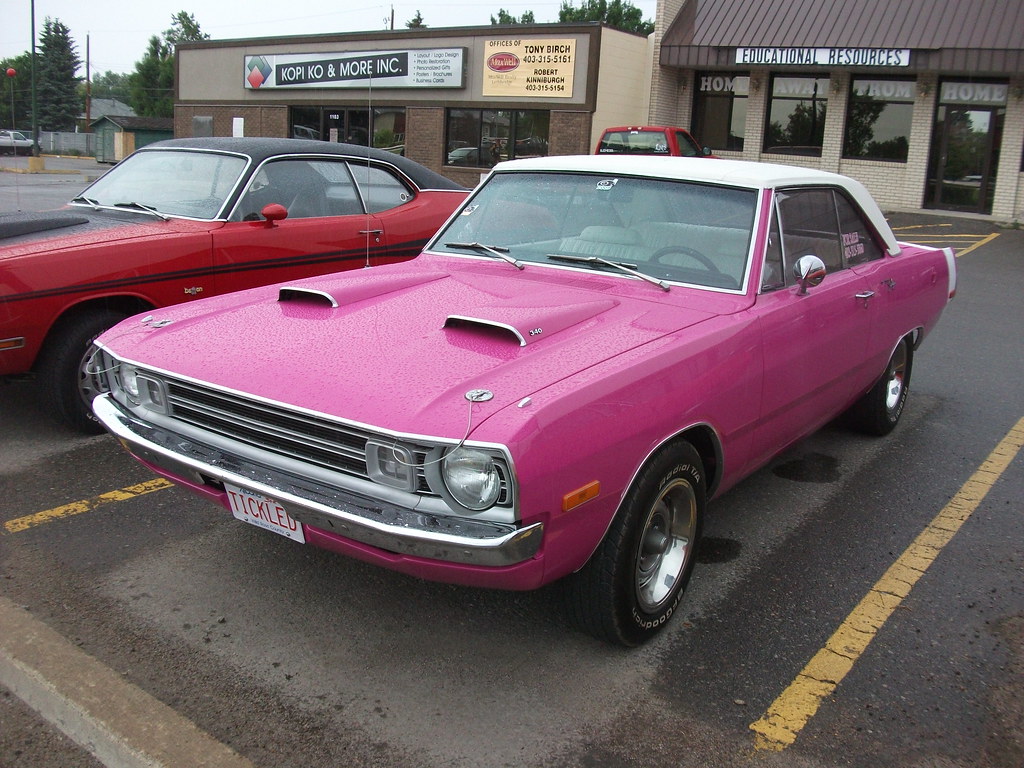
8. **Dodge Dart Swinger**The Dodge Dart Swinger, a product of the late 1960s and early 1970s, specifically from 1967 to 1976, carved out a niche as a popular compact muscle car. It was celebrated for its spirited performance, often equipped with a range of V8 engine options that belied its more modest footprint. Its lightweight construction, combined with potent power, positioned it as an accessible and undeniably fun performance vehicle during its heyday.
However, for a generation accustomed to contemporary automotive standards, the Dart Swinger often presents a series of undeniable drawbacks. Millennials tend to bypass this classic, citing its dated technology as a primary concern, a stark contrast to the integrated infotainment and advanced driver-assist systems found in modern vehicles. Compounding this, its lower build quality, a common characteristic of many cars from that era, falls short of the expectations for reliability and refinement held by today’s buyers.
While the Dart Swinger’s retro styling and robust performance capabilities could theoretically appeal to a segment of younger enthusiasts with a taste for vintage speed, the practical realities quickly intervene. The significant absence of modern features, coupled with the prospect of higher maintenance costs inherent in vintage car ownership, renders it a less attractive proposition. Younger buyers are, by and large, seeking a blend of classic charm with a semblance of modern convenience and economic viability.
This trend highlights a broader generational shift: while the desire for a classic car persists, the willingness to compromise on daily usability, technological integration, and predictable running costs has diminished. The Dart Swinger, for all its historical significance as an affordable performance car, struggles to compete with alternatives that offer a more rounded ownership experience for the modern enthusiast.
Car Model Information: 2024 Toyota Camry SE
Name: Dodge Dart
Caption: 1966 Dodge Dart GT 2-door hardtop
Manufacturer: Dodge
Production: 1959–1976 (US market)
ModelYears: 1960–1976 (US market)
Class: Full-size
Layout: FR layout
Predecessor: Dodge Coronet#Fourth generation (1957–1959)
Related: Plymouth Valiant,Chrysler Valiant,Dodge Phoenix
Successor: Dodge Aspen,Dodge Diplomat,Talbot Tagora
Categories: 1970s cars, All articles with unsourced statements, Articles with short description, Articles with unsourced statements from December 2023, Articles with unsourced statements from May 2025
Summary: The Dodge Dart is a line of passenger cars produced by Dodge from the 1959 to 1976 model years in North America, with production extended to later years in various other markets.
The production Dodge Dart was introduced as a lower-priced full-size model in 1960 and 1961, but became a mid-size car for one model year for 1962, and was then reduced to a compact for two generations, from 1963 to 1976.
Chrysler had first used ‘Dart’ name plates on two Italian styled show cars, in 1956 and 1957, before it became a Dodge model name. The Dart nameplate was resurrected for a Fiat-derived compact car that was introduced in 2012.
Get more information about: Dodge Dart
Buying a high-performing used car >>>
Brand: Dodge Model: Dart Swinger
Price: $23,188 Mileage: 64,336 mi.
Read more about: Buyer’s Remorse on Full Display: 15 Vehicles Motorists Swear They’d ‘Unchoose’ if They Could, According to Driver Confessions
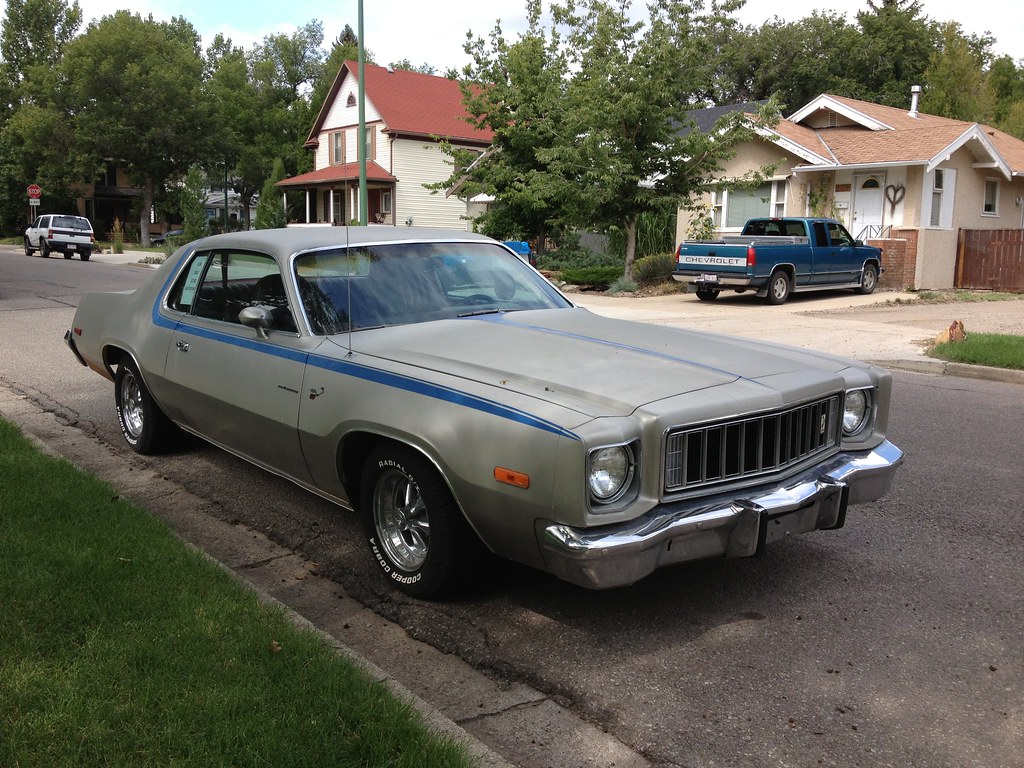
9. **Plymouth Road Runner**The Plymouth Road Runner, produced between 1968 and 1980, is an undisputed legend in the muscle car pantheon. It forged its reputation on a straightforward, no-frills approach to performance, focusing purely on raw power and blistering speed. Equipped with formidable V8 engines, this machine was purpose-built to dominate the drag strip and thrill enthusiasts, quickly becoming a favorite among those who valued unadulterated automotive exhilaration.
Despite its iconic status, the Road Runner frequently finds itself overlooked by Millennials today. A major deterrent is its notorious fuel inefficiency, a common trait among high-horsepower muscle cars of that era, but a significant concern for a generation increasingly focused on environmental impact and operating expenses. Furthermore, the inherent higher maintenance costs associated with preserving such a vintage performance vehicle add another layer of practical burden.
Younger buyers are often drawn to more modern, fuel-efficient sports cars that can deliver comparable thrills without the same financial and logistical commitments. These newer alternatives offer a superior balance of performance, economy, and reliability, making them a more compelling choice for many.
While the Road Runner’s visceral performance and striking classic design undeniably possess an enduring appeal for dedicated muscle car aficionados, these practical drawbacks significantly limit its broader attraction. The raw, unfiltered experience it offers remains captivating, but it’s a charm often viewed from a distance, rather than embraced in the garage, by a generation weighing passion against practicality.
Car Model Information: 2024 Toyota Camry SE
Name: Plymouth Road Runner
Assembly: Detroit,Michigan
Manufacturer: Plymouth (automobile)
Class: Mid-size car
Production: 1968–1980
Related: unbulleted list
Layout: FR layout
Categories: 1970s cars, 1980s cars, All articles needing additional references, All articles with peacock terms, All articles with unsourced statements
Summary: The Plymouth Road Runner is a muscle car introduced by Chrysler in the United States for the 1968 model year and marketed under its Plymouth brand. Initially based on the Belvedere, the brand’s basic mid-size model, the Road Runner combined a powerful engine with a spartan trim level and a price that undercut increasingly upscale and expensive muscle cars such as the Pontiac GTO and Plymouth’s own GTX. It was initially a sales success.
The Road Runner was built in three generations on the mid-size B platform. Like most muscle cars, its performance and sales declined in the 1970s due to an increasing focus on fuel economy and the adoption of more stringent U.S. emission standards. The nameplate became to a trim package for the compact Plymouth Volaré for model year 1976—no longer offering any special performance capability—and was discontinued in 1980.
Get more information about: Plymouth Road Runner
Buying a high-performing used car >>>
Brand: Plymouth Model: Road Runner
Price: $23,188 Mileage: 64,336 mi.
Read more about: Gone Too Soon? 15 Legendary American Brands That Vanished From Our Highways
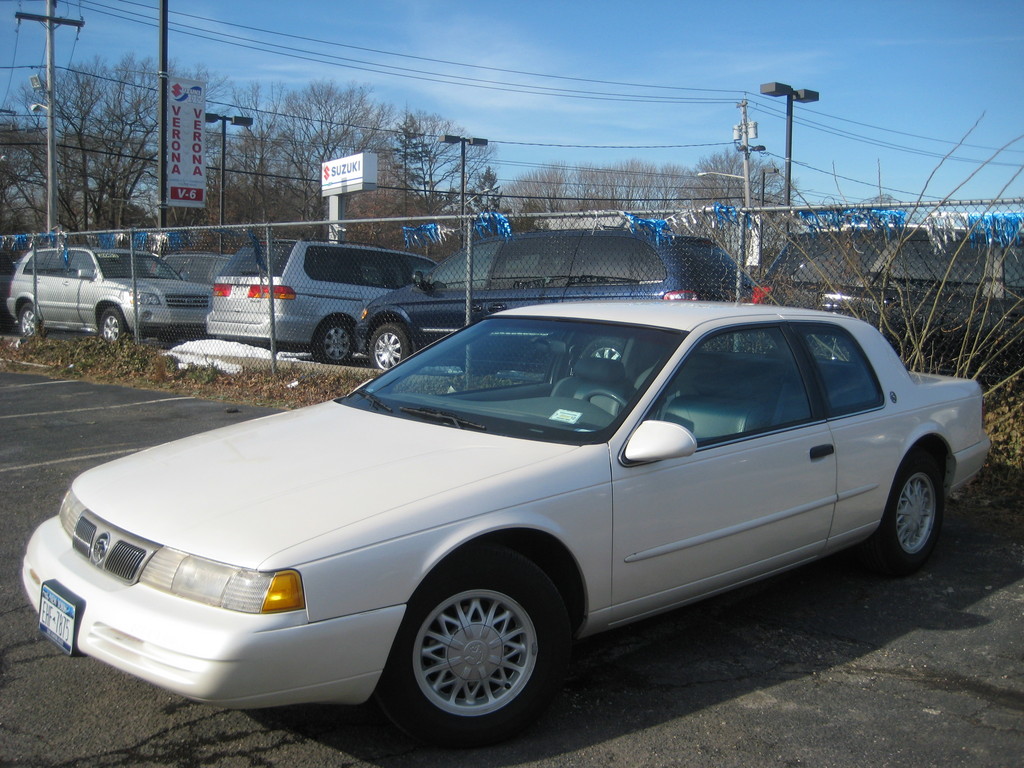
10. **Mercury Cougar**From 1967 to 2002, the Mercury Cougar occupied a distinctive space in the American automotive landscape, initially conceived as a more upscale and refined counterpart to the immensely popular Ford Mustang. It delivered a compelling blend of robust performance, thanks to its range of V8 engines, and an elevated level of comfort and luxury through its meticulously appointed interiors. The Cougar aimed to offer a sophisticated yet sporty driving experience.
However, for many Millennials, the Cougar embodies characteristics that push it to the periphery of desirable classics. Its substantial size, a hallmark of luxury and presence in its era, is often seen as cumbersome for contemporary driving and parking. Coupled with its predictable fuel inefficiency, this makes it a less attractive option for a generation more conscious of running costs and environmental footprint.
Furthermore, the perception that the Cougar is definitively an “older generation’s car” poses a significant hurdle. This image, combined with the notable absence of modern technological features, detracts from its appeal among buyers accustomed to advanced connectivity and safety systems in their vehicles.
Despite its stylish design and the inherent power of its V8 engines, the practical considerations often overshadow its classic allure. The challenge of integrating such a vehicle into a modern lifestyle, given its larger dimensions, thirst for fuel, and the typical higher maintenance costs of a vintage luxury model, leads many younger buyers to look elsewhere for their automotive passion.
Car Model Information: 1995 Mercury Cougar XR7
Name: Mercury Cougar
Caption: 1969 Mercury Cougar (first generation)
Manufacturer: Mercury (automobile)
Layout: Front-engine, rear-wheel-drive layout
ModelYears: 1967–1997,1999–2002
Class: Pony car,Personal luxury car,Mid-size car,Sport compact
Categories: 1960s cars, 1970s cars, 1980s cars, 1990s cars, 2000s cars
Summary: The Mercury Cougar is a series of automobiles that was sold by Mercury from 1967 to 2002. The model line is a diverse series of vehicles; though the Cougar nameplate is most commonly associated with two-door coupes, at various stages in its production, the model also was offered as a convertible and a hatchback. During its production as the mid-size Mercury line, the Cougar was also offered as a four-door sedan and five-door station wagon.
In production for 34 years across eight generations (skipping the 1998 model year), the Cougar is second only to the Grand Marquis (36 years) in the Mercury line for production longevity. 2,972,784 examples were produced, making it the highest-selling Mercury vehicle. During the 1970s and 1980s, the marketing of the Mercury division was closely associated with the Cougar, with promotional materials advertising Mercury dealers as “The Sign of the Cat” with big cats atop Lincoln-Mercury dealer signs. Cat-related nameplates were adopted by other Mercury lines, including the Bobcat and Lynx.
During its production, the Cougar was assembled at the Dearborn Assembly Plant (part of the Ford River Rouge Complex) in Dearborn, Michigan from 1967 until 1973, San Jose Assembly (Milpitas, California) from 1968 into early 1969, Lorain Assembly (Lorain, Ohio) from 1974 until 1997, and at Flat Rock Assembly (Flat Rock, Michigan) from 1999 through 2002.
Get more information about: Mercury Cougar
Buying a high-performing used car >>>
Brand: Mercury Model: Cougar
Price: $10,995 Mileage: 37,589 mi.
Read more about: Dream Drives: 15 Classic Cars That Should Absolutely Be Revived for Today’s Roads
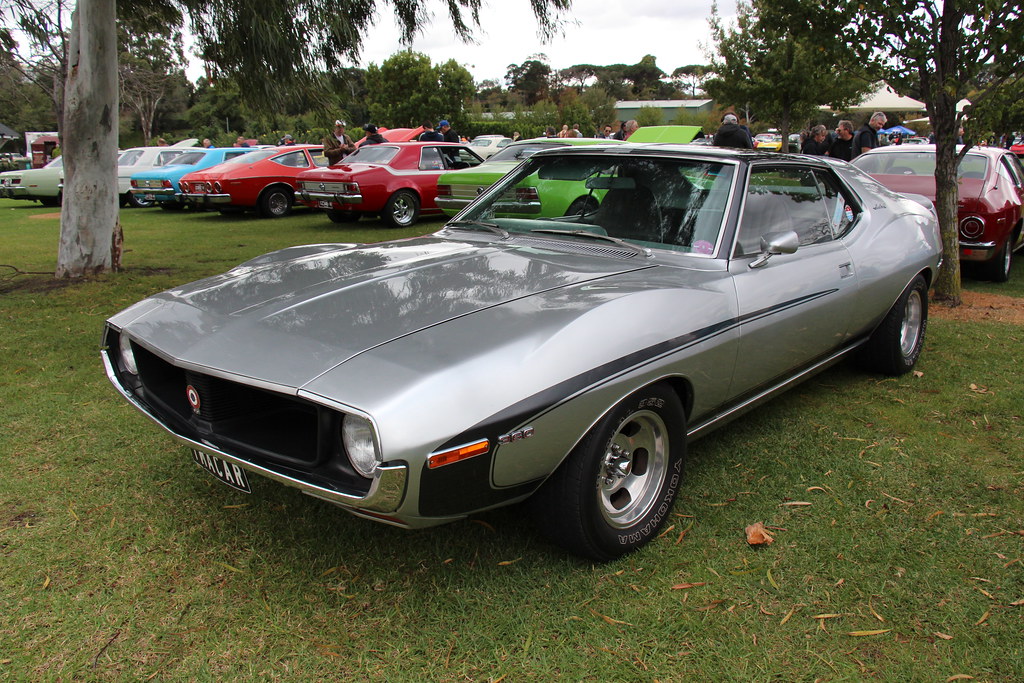
11. **AMC Javelin**The AMC Javelin, produced for a relatively brief but impactful period from 1968 to 1974, stands out as a unique classic muscle car with a truly distinctive styling that set it apart from its more mainstream competitors. It offered exciting performance, powered by a selection of robust V8 engines, including the potent 401 cubic inch unit, which promised and delivered a spirited driving experience for its enthusiasts.
Yet, the Javelin, like many of its muscle car contemporaries, faces an uphill battle in capturing the interest of Millennial buyers. Its well-documented fuel inefficiency remains a significant practical deterrent, conflicting with modern economic realities and environmental consciousness. The higher maintenance costs typically associated with vintage performance vehicles further complicate the ownership proposition.
Many younger enthusiasts now prefer modern performance cars that deliver comparable or even superior thrills, but with the added benefits of contemporary technology, enhanced reliability, and significantly better fuel economy. This shift in preference underscores a desire for a balanced package of excitement and practicality.
While the Javelin’s unique design and undeniable muscle car heritage could undoubtedly attract a niche of younger enthusiasts who appreciate its rarity and bold aesthetic, the cumulative practical drawbacks tend to limit its broader appeal. It remains an admired piece of automotive history, often celebrated for its distinctiveness, but less frequently pursued for ownership by a new generation prioritizing modern sensibilities.
Read more about: Dream Drives: 15 Classic Cars That Should Absolutely Be Revived for Today’s Roads
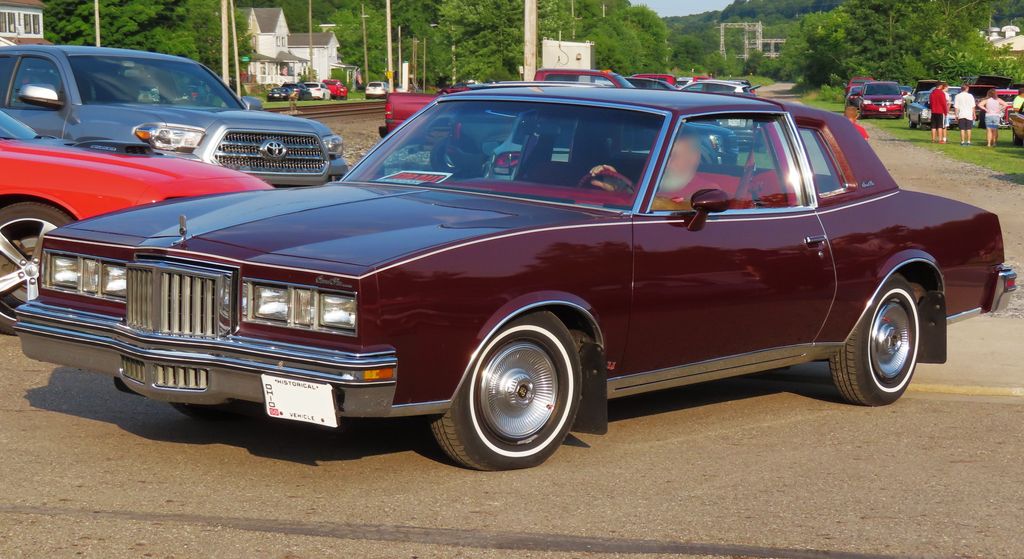
12. **Pontiac Grand Prix**The Pontiac Grand Prix, a nameplate that spanned decades from 1962 to 2008, evolved considerably throughout its production, beginning as a personal luxury car before transitioning into a popular mid-size sedan. Across its many iterations, it consistently offered a blend of performance and comfort, underpinned by a range of powerful V8 engines and often featuring stylish, contemporary designs that appealed to a broad audience.
For Millennials today, however, the Grand Prix often falls into the category of vehicles they tend to overlook. Its substantial size, particularly in its earlier luxury car guises, is frequently perceived as cumbersome for navigating today’s crowded urban environments and suburban streets. This large footprint, as expected, translates into significant fuel inefficiency, a considerable financial and practical concern for younger buyers.
Adding to these practical issues is the pervasive perception that the Grand Prix is inherently an “older generation’s car.” This image, combined with a pronounced lack of modern technological features that a connected generation expects, diminishes its allure considerably. The convenience and advanced amenities of newer vehicles prove to be a stronger pull.
Despite the undeniable appeal of its stylish design and the inherent power of its V8 engines, the practical drawbacks of ownership often outweigh the aesthetic and historical charm. The absence of modern infotainment, advanced safety systems, or even simply better gas mileage makes the Pontiac Grand Prix a less compelling option for younger buyers who prioritize a contemporary driving experience.
Car Model Information: 2024 Toyota Camry SE
Name: Pontiac Grand Prix
Caption: 2004–2008 Pontiac Grand Prix
Manufacturer: Pontiac (automobile)
ModelYears: 1962–2008
Class: Personal luxury car
Layout: Front-engine, rear-wheel-drive layout
Successor: Pontiac G8
Platform: unbulleted list
Categories: 1960s cars, 1970s cars, 1980s cars, 1990s cars, 2000s cars
Summary: The Grand Prix is a line of automobiles produced by the Pontiac Division of General Motors from 1962 until 2002 as coupes and from 1989 through 2008 model years as four-door sedans.
First introduced as a full-size performance coupe for the 1962 model year, the model repeatedly varied in size, luxury, and performance over successive generations. The Grand Prix was the most expensive coupe Pontiac offered until the 1970s, when the Bonneville Brougham and the Firebird Trans Am became more exclusive; the Grand Prix moved into the intermediate personal luxury car and later the mid-size market segments.
All Grand Prixs from 1962 through 1972 were pillarless hardtops (except for the 1967 convertible).
Get more information about: Pontiac Grand Prix
Buying a high-performing used car >>>
Brand: Pontiac Model: Grand Prix
Price: $23,188 Mileage: 64,336 mi.
Read more about: Dream Drives: 15 Classic Cars That Should Absolutely Be Revived for Today’s Roads
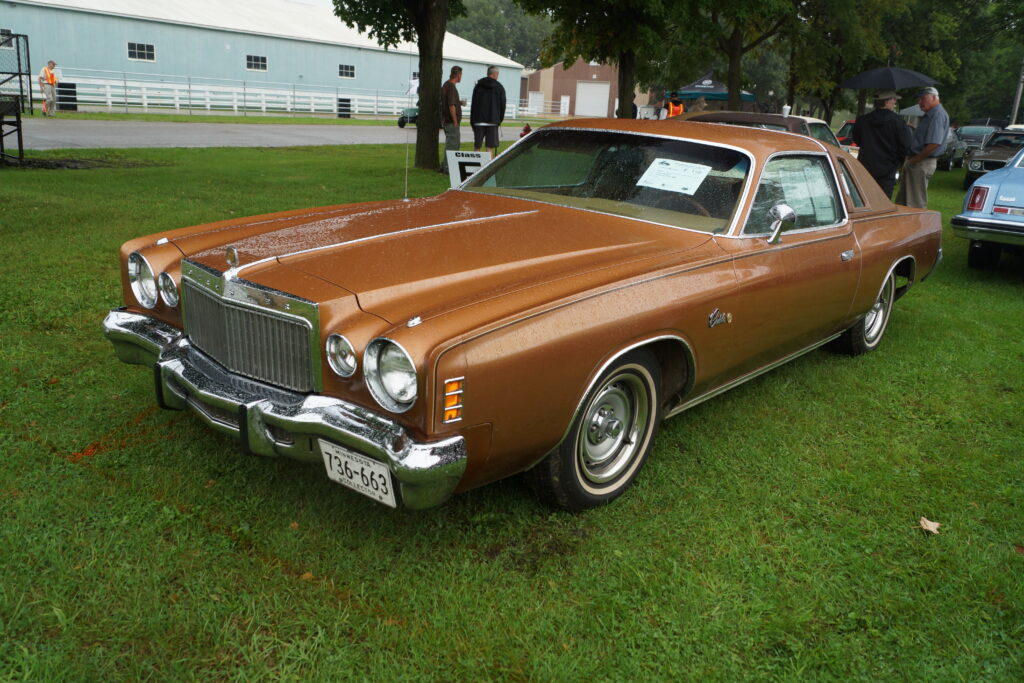
13. **Chrysler Cordoba**The Chrysler Cordoba, a distinctive personal luxury car produced from 1975 to 1983, became synonymous with a particular brand of American opulence. It was renowned for its sumptuously plush interiors, often featuring rich materials like Corinthian leather, and its distinctive styling that exuded sophistication. With a range of V8 engines and a focus on luxurious features, the Cordoba promised a comfortable and stylish ride, truly a statement of mid-1970s automotive indulgence.
Yet, for many Millennials, the Cordoba represents a vehicle that embodies several characteristics they tend to avoid. Its substantial size, while indicative of its luxury status, is now often viewed as unwieldy and impractical for modern roads and parking situations. This generous footprint also comes with the expected trade-off of poor fuel economy, a major concern for today’s financially and environmentally conscious consumers.
Furthermore, the Cordoba is widely perceived as an “older generation’s car,” an image that struggles to resonate with the aesthetic and functional preferences of younger buyers. The lack of modern technology and the general complexity of maintaining a vintage luxury vehicle further complicate its appeal.
While the sheer indulgence of its luxurious interiors and its classic, distinctive design could hold a certain nostalgic charm for those interested in a specific bygone era of automotive style, these practical drawbacks cast a long shadow. The blend of enormous dimensions, considerable running costs, and the general complexities of owning such a machine make the Chrysler Cordoba a challenging proposition for younger generations seeking a more balanced and practical classic car ownership experience.
Car Model Information: 1977 Chrysler Cordoba
Assembly: Windsor Assembly,Windsor, Ontario
Name: Chrysler Cordoba
Caption: 1978 Chrysler Cordoba
Manufacturer: Chrysler Corporation
Class: Personal luxury car
ModelYears: 1970,1975–1983
Predecessor: Chrysler 300 non-letter series
Successor: Chrysler Laser
BodyStyle: coupe
Layout: Front-engine, rear-wheel drive layout
Categories: 1980s cars, Articles with short description, Cars introduced in 1975, Chrysler vehicles, Commons category link from Wikidata
Summary: The Chrysler Cordoba was introduced as a full-sized luxury car based on the Chrysler Newport that was marketed during the 1970 model year. It was also applied to a show car exhibited that year.
The nameplate was then applied to an intermediate-sized two-door personal luxury car starting with the 1975 model year. The Cordoba was manufactured by Chrysler in North America over two generations until the 1983 model year.
The personal luxury version was the company’s first model produced specifically for that market segment and the first Chrysler-branded vehicle smaller than full-size.
The name was taken from the Spanish city of Córdoba, Spain.
Get more information about: Chrysler Cordoba
Buying a high-performing used car >>>
Brand: Chrysler Model: Cordoba
Price: $22,000 Mileage: 30,467 mi.
Read more about: Seriously Where Did They Go? 12 Iconic SUVs That Vanished From Our Highways: A MotorTrend Retrospective on Automotive History
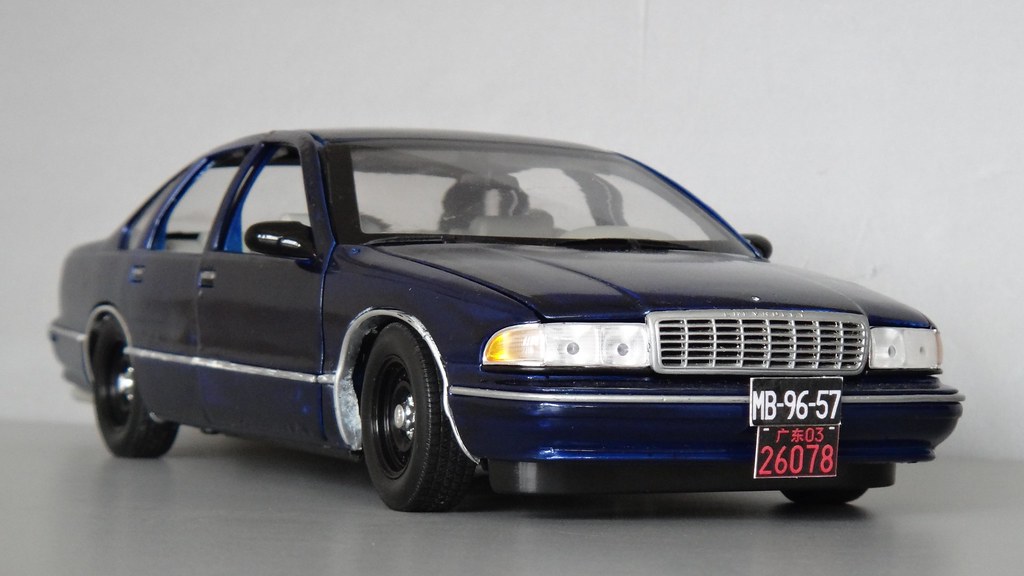
14. **Chevrolet Caprice**The Chevrolet Caprice, a popular full-size sedan manufactured from 1965 to 1996, was a cornerstone of American automotive practicality and comfort for decades. It earned its reputation for its remarkably spacious interiors, which made it a favorite among families, and its smooth, cushioned ride that epitomized traditional American motoring. Equipped with a range of reliable V8 engines, the Caprice consistently delivered a dependable and comfortable experience.
However, a new wave of buyers, particularly Millennials, frequently passes over the Caprice. Its considerable size, while once an asset for family hauling, is now often perceived as excessively large and less agile than desired for modern driving conditions. This impressive scale, unsurprisingly, is coupled with notoriously poor fuel economy, presenting a significant practical and financial hurdle for contemporary drivers.
Moreover, the Caprice often battles the perception that it is intrinsically an “older generation’s car,” an image that struggles to align with the contemporary tastes and values of younger enthusiasts. The absence of modern technological amenities, from advanced infotainment to sophisticated safety features, further detracts from its appeal.
While the Caprice’s classic American design, its supremely spacious interiors, and the undeniable comfort of its ride could hold a certain nostalgic draw for those with an appreciation for its legacy, these pervasive practical drawbacks tend to limit its broader attraction. For a generation prioritizing a blend of modern usability, economic efficiency, and contemporary aesthetics, the Chevrolet Caprice often remains an admired relic rather than a coveted acquisition.
As we’ve seen, the classic car market is undergoing a fascinating transformation, driven by a new generation of enthusiasts—Millennials and Gen Z—who are reshaping its very contours. This isn’t a story of waning passion, but rather of evolving preferences. These younger collectors are not merely interested in preserving vehicles as static showpieces; they want to *drive* them, seeking an experience that connects them directly to the open road and the mechanical symphony of a classic engine.
The shift is deeply rooted in practical considerations and a different kind of nostalgia. With often less disposable income than their predecessors, these buyers are gravitating towards more affordable classics like the Mazda Miata or rugged SUVs such as the Ford Bronco and Chevrolet Blazer, vehicles that resonate with their childhood memories and offer a blend of usability and simplicity. The data from Hagerty unmistakably confirms this trend, with Gen Xers and Millennials now outpacing older generations in seeking classic vehicle information and insurance quotes, signaling a definitive changing of the guard.
What truly captivates this new wave of enthusiasts goes beyond mere aesthetics. There’s a burgeoning interest in vehicles that are not only powerful but also easier to work on, fostering a deeper, hands-on connection to their machines. The rise of “resto mods” and pro-touring cars – where classic bodies conceal modern underpinnings for enhanced performance and handling – speaks volumes about this desire for customizability and a dynamic driving experience. This allows them to blend vintage appeal with contemporary functionality, creating something uniquely their own.
Car Model Information: 1996 Chevrolet Caprice SS Immaculate Collector Condition, 1-Owner, 6k!
Name: Chevrolet Caprice
Caption: Chevrolet Caprice PPV
Manufacturer: unbulleted list
Production: unbulleted list
ModelYears: unbulleted list
Predecessor: unbulleted list
Class: Full-size car
Platform: unbulleted list
Layout: FR layout
Categories: 1970s cars, 1980s cars, 1990s cars, 2000s cars, 2010s cars
Summary: The Chevrolet Caprice is a full-size car produced by Chevrolet in North America for the 1965 through 1996 model years. Full-size Chevrolet sales peaked in 1965, with over a million units sold. It was the most popular car in the U.S. in the 1960s and early 1970s, which, during its production, included the Biscayne, Bel Air, and Impala.
Introduced in mid-1965 as a luxury trim package for the Impala four-door hardtop, Chevrolet offered a full line of Caprice models for the 1966 and subsequent model years, including a “formal hardtop” coupe and an Estate station wagon. The 1971 through 1976 models are the largest Chevrolets built. The downsized 1977 and restyled 1991 models were awarded Motor Trend Car of the Year. Production ended in 1996.
From 2011 until 2017, the Caprice nameplate returned to North America as a full-size, rear wheel drive police vehicle, a captive import from Australia, built by General Motors’s subsidiary Holden. The police vehicle is a rebadged version of the Holden WM/WN Caprice. The nameplate also had a civilian and police presence in the Middle East from 1999 until 2017, where the imported Holden Statesman/Caprice built by Holden was marketed as the Chevrolet Caprice in markets such as Saudi Arabia and the UAE.
Get more information about: Chevrolet Caprice
Buying a high-performing used car >>>
Brand: Chevrolet Model: Caprice
Price: $43,995 Mileage: 6,046 mi.
Read more about: Beyond the Bandit: 12 Legendary Pontiacs You Need to Know (and Possibly Own) Before They’re Gone Forever
Ultimately, the enduring appeal of classic cars for younger generations is a powerful testament to the timeless allure of the automobile. Despite the looming presence of autonomous vehicles and evolving ownership models, the passion for *driving* remains as strong as ever. It’s a passion that separates the joy of the open road from the daily commute, embracing the freedom and connection only a classic car can provide. For those ready to turn a wrench, hit the road, and connect with a tangible piece of history, the vibrant future of classic car ownership is undoubtedly in motion.


